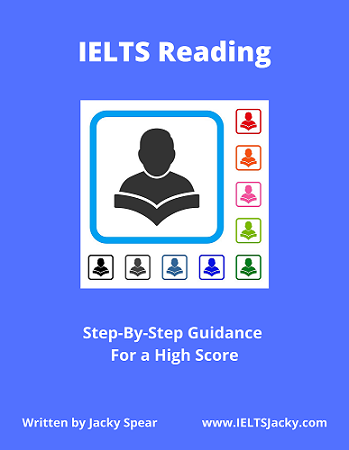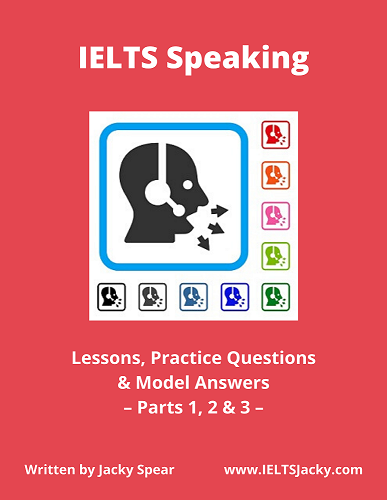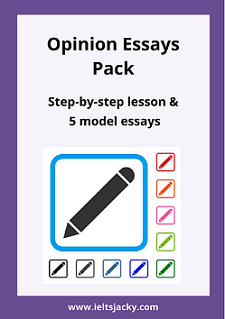IELTS Writing Tasks
How to Write Task 2 Introductions
To score highly for IELTS writing tasks, you need to impress the examiner from the very first sentence. This lesson will show you how.
In it you’ll learn:
- Why the introduction is so important
- The 3 part structure
- 4 common mistakes to avoid
- How to write a great introduction
Want to watch and listen to this lesson?
Click on this video.
Why the Introduction is So Important
Beginning your IELTS writing tasks well will immediately start stacking up the marks for both Task Achievement and Coherence and Cohesion which together carry 50% of the marks.
A good introduction does several things:
- It gives an excellent first impression.
- It shows the examiner that you understand the question.
- It gives the examiner a brief overview of what you’ll cover in the rest of the essay.
- It focuses your thoughts and keeps you on track while writing.
The 3 Part Structure
A good introduction has a simple 3 part structure:
- Paraphrased question
- Thesis statement
- Outline statement
This structure can be used for any type of question. It should:
- Have 2-3 sentences
- Be 40-60 words long
- Take 5 minutes to write
Before I show you how to write good introductions to Task 2 IELTS writing tasks, I want to flag up some common errors students make to help you avoid them.
4 Common Mistakes
# 1 Not being specific enough
It’s tempting to start your essay with a general statement about the topic of the question. Don’t do this. You need to be very specific. Here’s an illustration of a poor opening sentence.
Question:
Everybody should become a vegetarian because eating meat can cause serious health problems.
To what extent do you agree or disagree?
Bad first sentence:
These days, many people are worried about their health and changing their diet is one way that they try to improve it.
This is not a question about health in general but one specifically about becoming a vegetarian for health reasons.
A good first sentence will paraphrase the question, that is, it will state the same information using different language and often, a different sentence structure as well.
We’ll be looking at paraphrasing and an example of a good first sentence later in this lesson.
# 2 Not writing a thesis statement
A thesis statement is a summary of the main idea of your essay. When the examiner reads it, they will instantly know whether or not you have understood the question correctly. It also acts as an outline for the rest of your essay.
This makes the thesis statement the most important sentence in your essay. If you get it right, you will have got off to the perfect start.
There’s an easy to remember formula for writing thesis statements which we’ll be studying below. For now, here’s an example relating to our sample question.
Thesis statement: This essay agrees that the world’s population should stop consuming meat due to the related health risks.
Note the use of synonyms to paraphrase the question.
# 3 Not stating your opinion
Task 2 IELTS writing tasks generally require you to give your opinion. Usually, this will be clearly stated in the question. For example, the instruction might say,
- To what extent do you agree or disagree?
or
- Discuss both views and give your own opinion.
In other questions, it won’t be so clear that this is what you should do. For example,
- What are the advantages and disadvantages of tourism in the modern world?
However, your opinion – the main idea of your essay – is still required. If you always include it in the introduction, as well as throughout your essay, you won’t go wrong.
# 4 Using inappropriate language
For Task 2 essays, you must use formal language. Most students understand this.
However, many candidates make the mistake of trying to use clever or complex language to add interest or to show off their high-level language skills.
Keep tight control of your language. This is a very short essay and you don’t have the time or space to get carried away with elaborate words and phrases.
Get the information across quickly and succinctly using everyday language that includes topic words and their synonyms.
Most importantly, use the language correctly. The more complex you make it, the more errors you’re likely to make.
I show you how to write essay introductions for each of the 5 question types on their individual pages where I go into everything in much more detail.
Opinion Essays – Agree or Disagree
Problem Solution Essays + Causes & Solutions
For the rest of this page, I’ll go through just one example to illustrate some of the points I’ve made.
How To Write a Great Introduction
Here’s a reminder of the 3 part structure you should use for all task 2 IELTS writing tasks.
- Paraphrased question
- Thesis statement
- Outline statement
Paraphrased Question
Start your introduction by paraphrasing the question.
Question:
Some young people are leaving the countryside to live in cities and towns, leaving only old people in the countryside.
Do you think this is a positive or a negative development?
Paraphrased question: The
migration of the younger generation to urban areas is leaving many rural
locations populated predominantly by the elderly.
Note the use of synonyms for many of the keywords. For example,
- young people – younger generation
- countryside – rural locations
- cities and towns – urban areas
- leaving – migration
- old people – the elderly
You don’t have to replace them all but do so where possible without making the sentence sound awkward.
It’s fine to repeat one or two words. Don’t spend too much time trying to think of synonyms or use ones you are not 100% sure are correct.
Thesis statement
The thesis statement states your opinion on the topic. In most instances, you simply need to decide whether to agree or disagree with it and to reiterate the main idea of the statement. For example,
Thesis statement: This
essay argues that the loss of young people from the rural landscape has problematic consequences.
This thesis statement states the opinion of the writer and paraphrases the question again in a way that makes this view clear.
Outline statement
Finally in the introduction, you must outline the two main points that you’ll cover in the rest of the essay. This acts as a guide to the examiner and also helps to keep you focused and on track as you write.
Do it in one sentence, or you can add them onto the end of the thesis statement if appropriate.
Outline statement: The two most serious are, the depletion of the rural workforce and the loss of local education facilities.
These two ideas will become your two main body paragraphs.
- Main body paragraph 1 – the depletion of the rural workforce.
- Main body paragraph 2 – the loss of local education facilities.
The Finished Introduction
So now, let’s pull the whole introduction together.
Question:
Some young people are leaving the countryside to live in cities and towns, leaving only old people in the countryside.
Do you think this is a positive or a negative development?
Final introduction:
The migration of the younger generation to urban areas is leaving many rural locations populated predominantly by the elderly. This essay argues that the loss of young people from the rural landscape has problematic consequences. The two most serious are, the depletion of the rural workforce and the loss of local education facilities.
These three
sentences exactly follow the 3 part structure I showed you for creating introductions
to task 2 IELTS writing tasks and also avoid the common mistakes I outlined above.
This short paragraph would be an excellent introduction to an essay on this topic.
Like this page?
More Help With IELTS Writing Tasks
IELTS Writing Test – Understand the format & marking criteria, know what skills are assessed & learn the difference between the Academic & General writing tests.
IELTS
Writing Tips – Top 10 tips to bring you success in your writing test.
Essential information you need to know to achieve a high score.
Task 2:
IELTS Writing Task 2 – The format, the 5 question types, the 5 step essay writing strategy & sample questions. All the key information you need to know.
The 5 Types of Task 2 Essay – How to recognise the 5 different types of Task 2 essays. 15 sample questions to study and a simple planning structure for each essay type.
Understanding Task 2 Questions – How to quickly and easily analyse and understand IELTS Writing Task 2 questions.
How To Plan a Task 2 Essay – Discover why essay planning is essential & learn a simple 4 step strategy, the 4 part essay structure & 4 methods of generating ideas.
How To Write Task 2 Main Body Paragraphs – Learn the simple 3 part structure for writing great main body paragraphs and also, 3 common mistakes to avoid.
How To Write Task 2 Conclusions – Learn the easy way to write the perfect conclusion for a Task 2 essay. Also discover 4 common mistakes to avoid.
Task 2 Marking Criteria – Find out how to meet the marking criteria in Task 2. See examples of good and poor answers & learn some common mistakes to avoid.
The 5 Task 2 Essay Types:
Step-by-step instructions on how to plan & write high-level essays. Model answers & common mistakes to avoid.
Advantages & Disadvantages Essays








